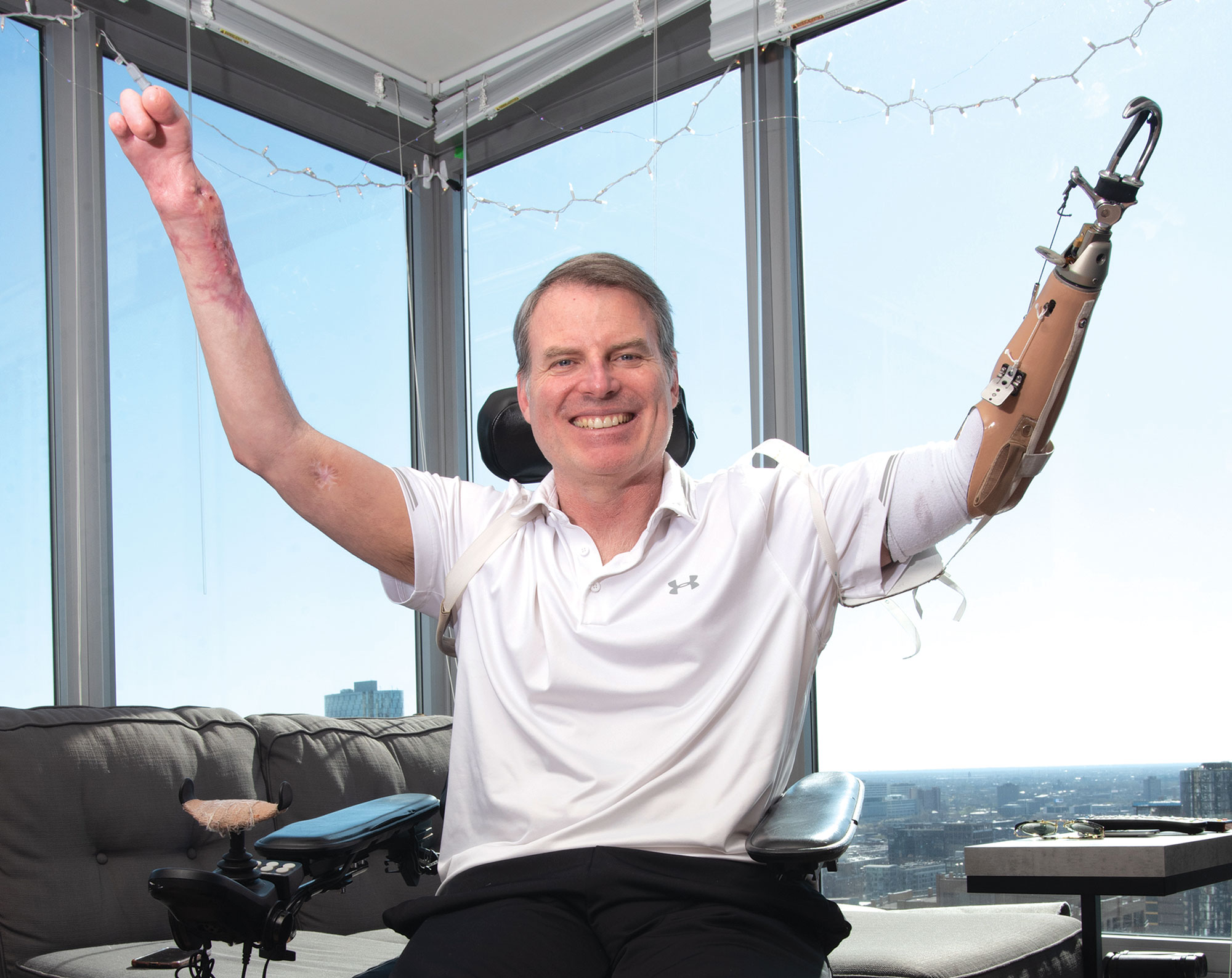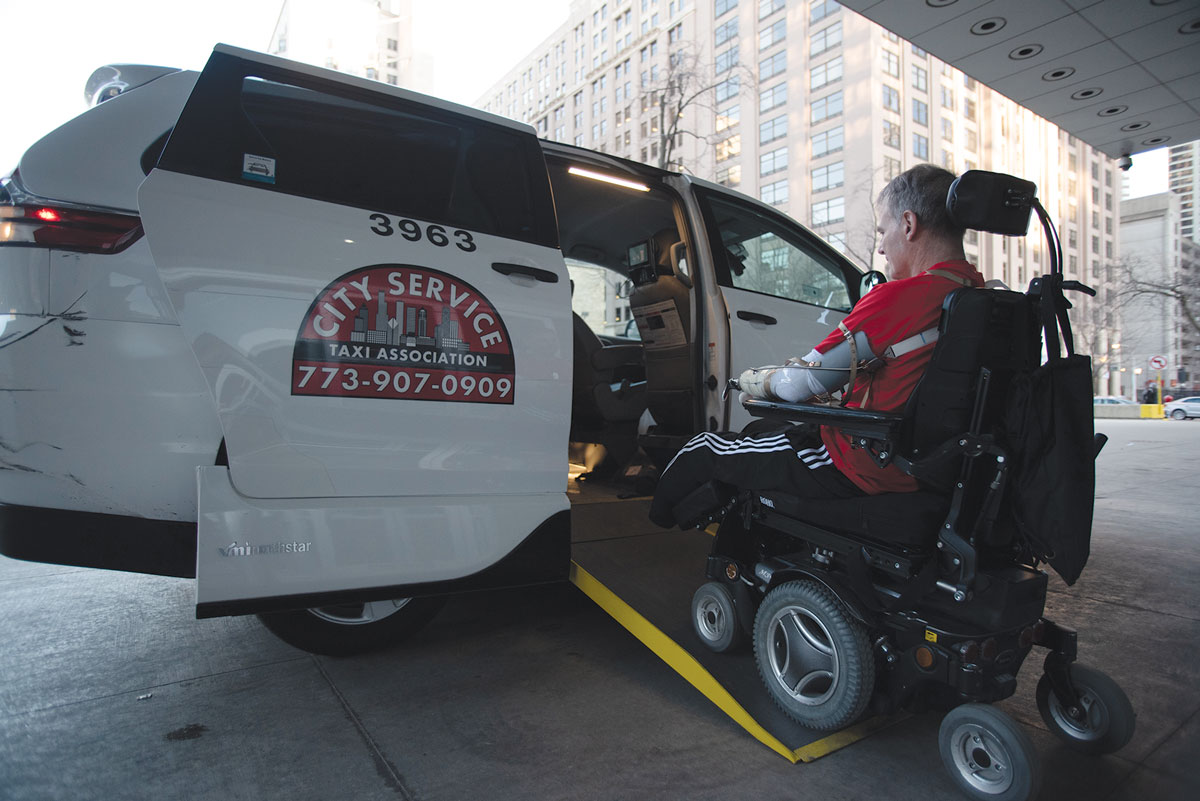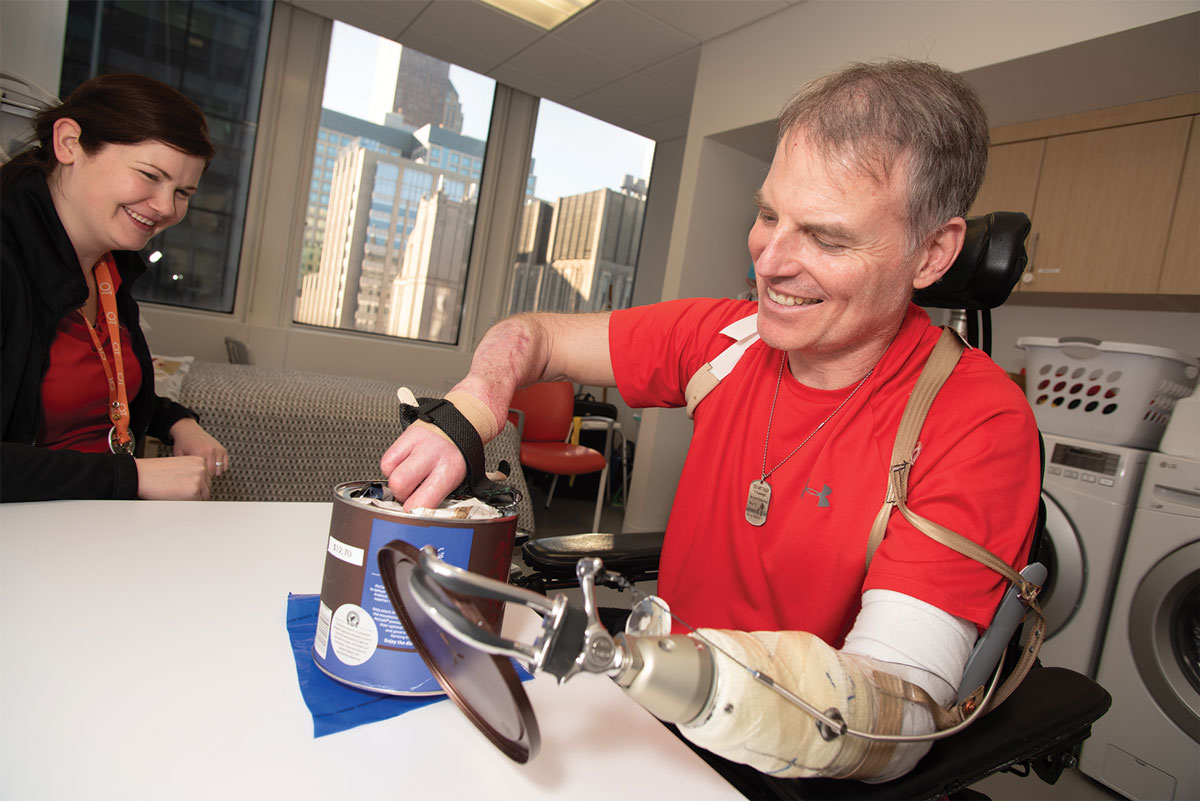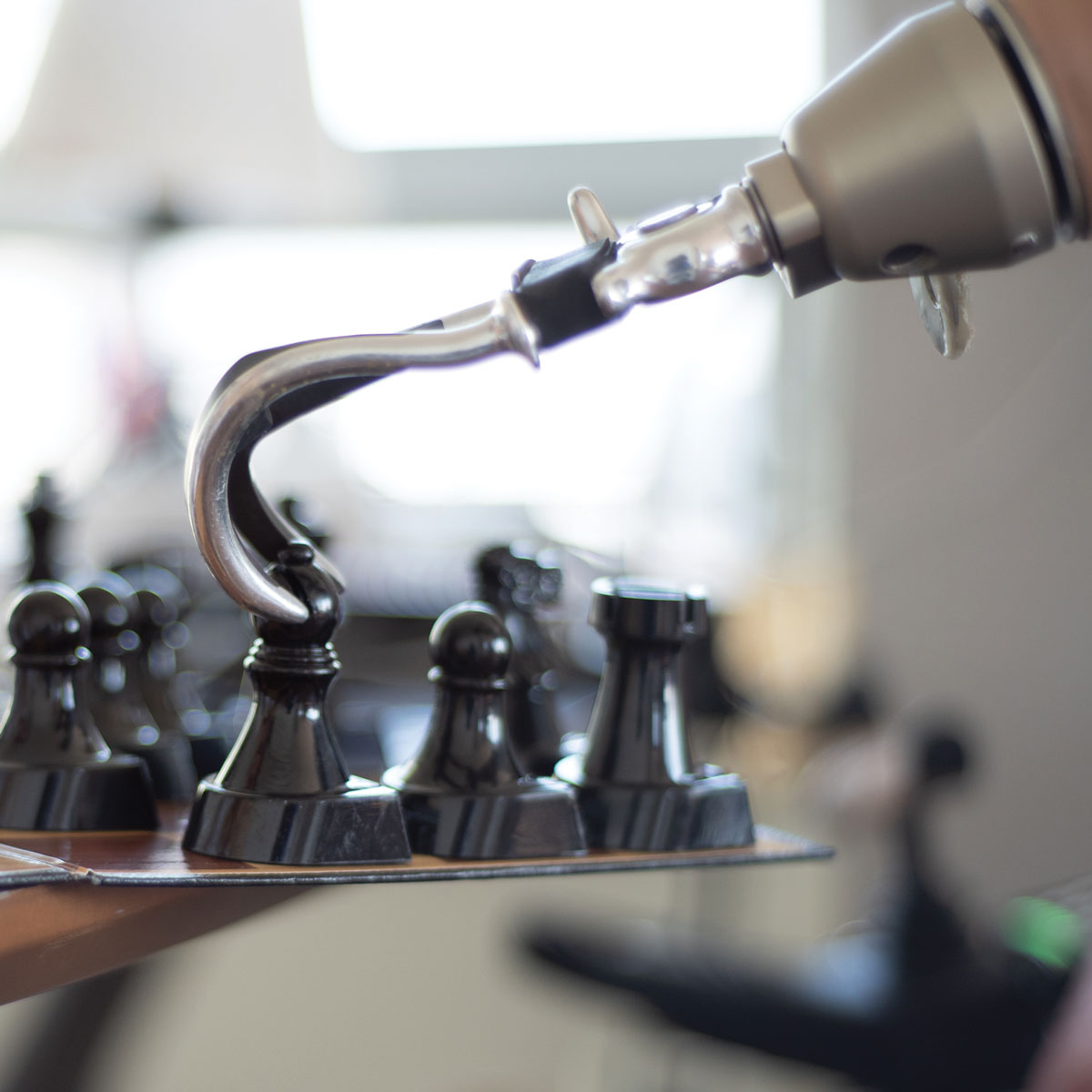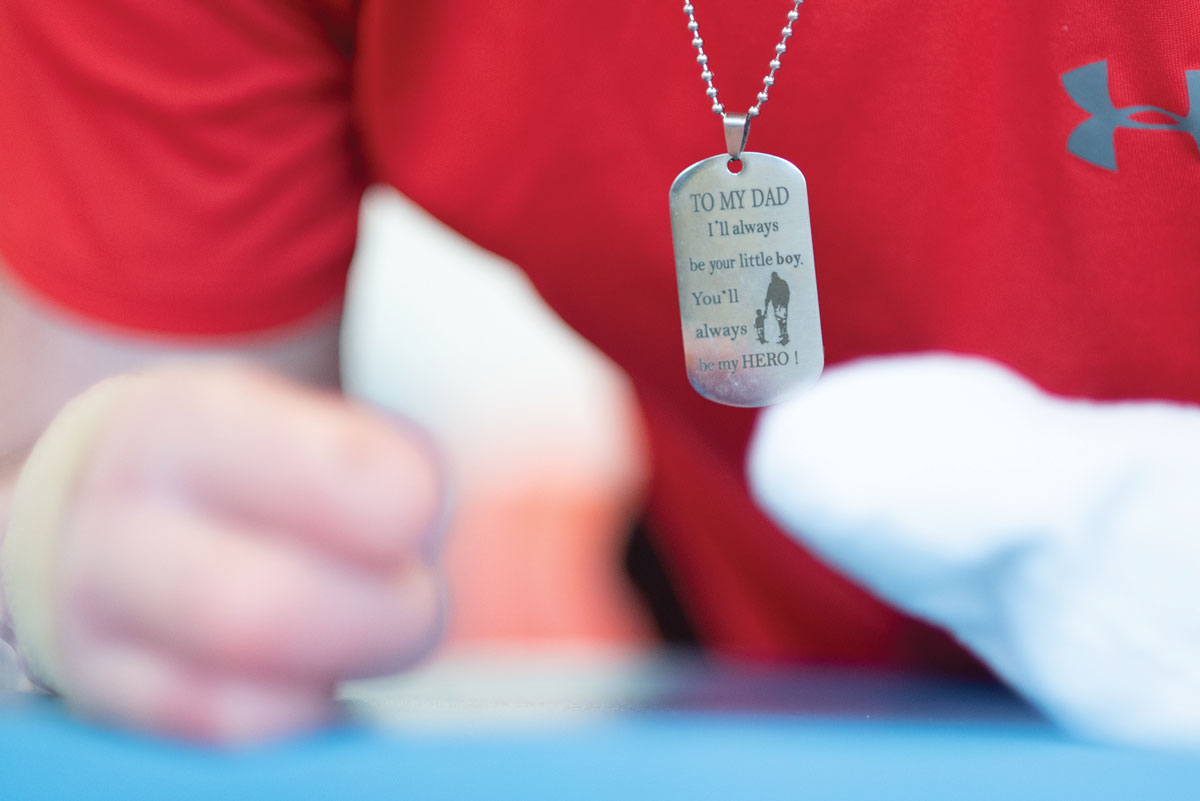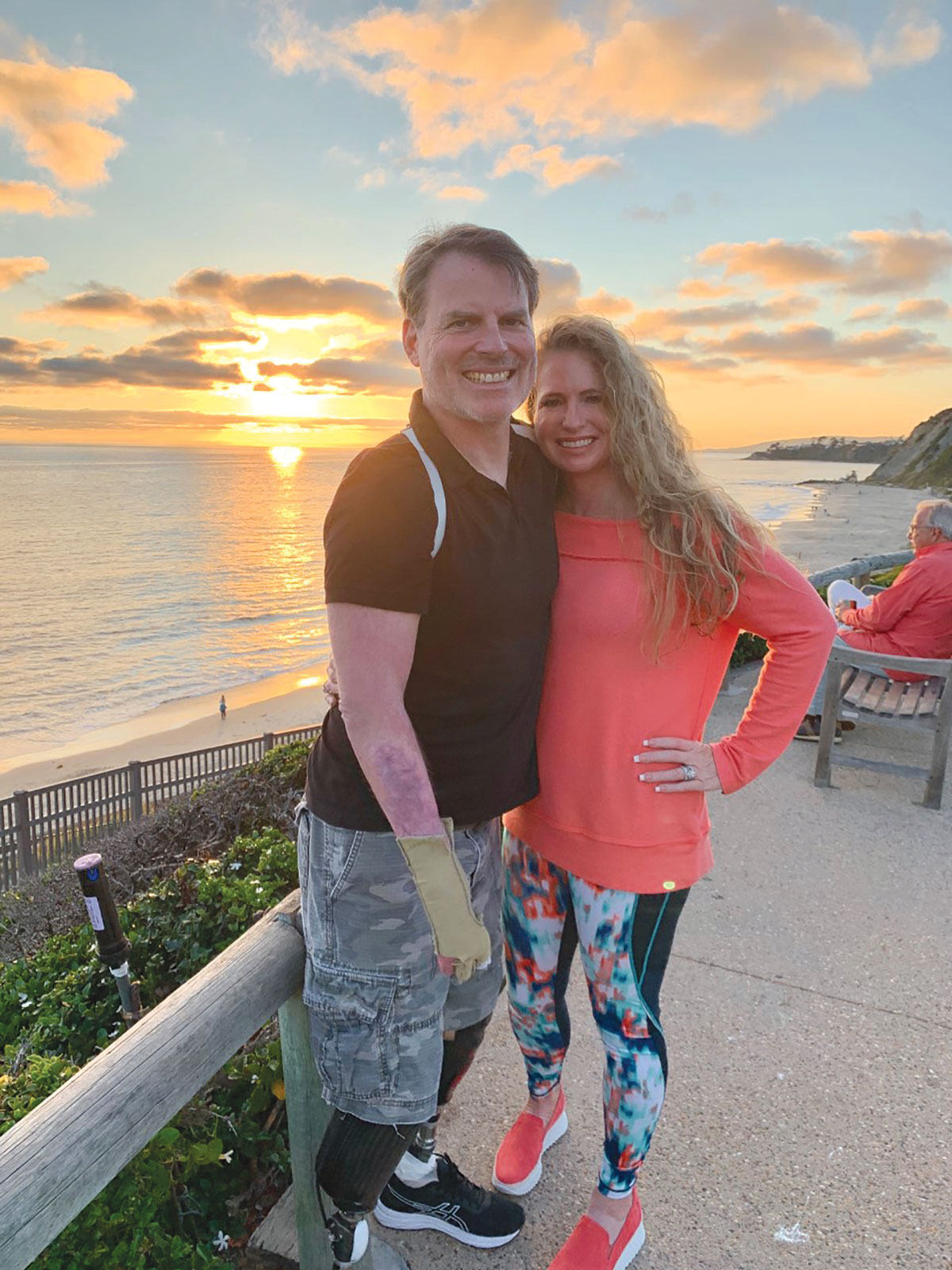COVID Time
Hartigan and Darcey had begun making plans—flexible plans—to return home. In late 2019, they sold their 4,500-square-foot house in Coto de Caza—too big for empty nesters and not wheelchair friendly. And in April, they bought a one-story home in San Clemente, Calif., that they’re retrofitting with an accessible bathroom and wider doorways. But along with their kids, who were finishing their college semesters via Zoom, they spent March, April and May in Hartigan’s 800-square-foot two-bedroom apartment in Chicago, watching
Tiger King,
Parasite and
Animal House. Hartigan, whose skin was still healing and who couldn’t be bumped during the night, slept in the smaller room, and Matt, Kayleigh and Darcey slept in the other. They fashioned a desk for Matt by duct-taping a closet door to two barstools.
Hartigan’s doctors told him to assume he is at high risk of COVID-19 complications, so he temporarily stopped going to outpatient PT and OT. Darcey felt safe running outdoors. Not Kayleigh, who worried she’d contract COVID-19 and infect her dad. “I tell her, ‘You don’t need to worry,’ and she says, ‘That’s what you told me last time,’” Hartigan said.
‘The 2.0 is being more in the present. If I look too far in the future, it seems like this is very hard and very slow.’
Meanwhile, Hartigan stayed in the apartment and did what he could to prepare his body for prosthetic legs. “They’re holding back for all the right reasons,” he said. “If I can’t bend my knees, it’s like walking on stilts.” From the moment he woke up, he’d work on core strength and range of motion for two to three hours each day. “It’s not like I have anything else to do,” he said. “This is it.”
On June 3, it was time. Hartigan took a COVID test and was readmitted to AbilityLab. The next day, he took his new, custom prosthetic legs for a spin around the lab, using a walker. The day after that, he walked about 40 feet. Back in California since July, Hartigan now uses the prosthetics and walker rather than a wheelchair when he leaves the house. Doctors expect that someday he will be able to run again.
Hartigan was motivated by an additional goal. “I want to be taller than my son again,” he said in the spring. (Matt is 5-foot-11, and Hartigan had a half inch on him before his amputations.)
Regardless of who is taller at any given moment, Matt still looks up to his father. For Christmas, Matt gave Hartigan silver dog tags that read, “To my dad. I’ll always be your little boy. You’ll always be my hero!” Hartigan always wears them.
Marty 2.0
Hartigan, who took a yearlong medical leave of absence and then retired from Deloitte, doesn’t know whether he will return to full-time work. In the past, he says, he used to think, “I’m going to work really hard now because then I’ll have the rest of my life to relax.” But “Marty 2.0,” as he describes himself, is “rebooting,” focusing on rehab and then figuring out what’s next later. “I spent a lot of time thinking about meetings or clients or events in the future,” he says. “The 2.0 is being more in the present. If I look too far in the future, it seems like this is very hard and very slow.”
Darcey, previously a big planner, calls herself a “day-by-dayer” now. “Lead your life today because you don’t know about tomorrow,” she says. She is grateful for the example of the couple’s new friend Jay Scher, an athletic 45-year-old and fellow Northwestern patient who lost limbs through septic shock six months before Hartigan. “He’s someone we look up to,” says Darcey, who notes that he helped them understand the possible rehab timeline.
Advice like Scher’s helps Hartigan focus on near-term goals. “I don’t think about it being like one gigantic milestone,” he says. Instead, he works on learning to be patient—“being patient in all ways, being patient when things are hard to do.”
And, he points out, not every outcome of his illness has been negative. “I’ve been on paid vacation for nine months,” Hartigan said in the spring. “My whole family is here with me. I’ve seen my friends more in the past nine months than in 20 years. In a bad situation, there have been a lot of good things.”
He and Darcey may have missed their planned silver-anniversary Caribbean cruise last September, but now they spend a record amount of time together. “It’s made me closer to my husband,” says Darcey. “He was gone Monday through Friday. Now we’re glued at the hip. Until I almost lost him, I didn’t realize how much I loved him.”
Hartigan has reconnected with his friends from Stanford rugby (he was the president) and Sigma Chi (he was the president). Fraternity brother Dan Druker, ’88, set up a Sunday virtual cocktail hour with eight of the guys. He also delivered a signed Stanford football to Hartigan’s hospital room in the early days—only to discover that K.J. Costello, ’20, and Austin Maihen, ’19, who went to high school with Kayleigh and Matt, had beaten him to it.
“Marty being who he was, the primary guy everybody turned to in tough times, made all of us feel we had to be twice as supportive,” says Sean Walters, ’91.
For their 30th reunion weekend last October, Tim Brien, ’89, visited Hartigan in Chicago instead of heading to the Farm. Sigma Chi brothers Tom Ellis, ’88, and Richard Stanley, ’90, came along. “There isn’t anybody who doesn’t like him,” says Brien. He sees a parallel between Hartigan’s situation and poker, which the Sigma Chis used to play together. “Just because you’re dealt a bad hand doesn’t mean you’re out of the game,” says Brien. “You can still win with a bad hand.”
It’s no accident, says Michael Colglazier, ’89, that so much of Hartigan’s support has come from the Stanford community. “That rekindling and outpouring—the engagement that went into Marty and his family—that happens because of the memories and the relationships that Stanford forges with its alumni,” he says. “It’s a combination of Stanford being what it is and Marty being who he is.”
Hartigan has even talked with Stanford robotics researcher Steve Collins, a professor of mechanical engineering who introduced him to colleagues at AbilityLab. “I found him super engaging, smart and helpful,” Hartigan says. Alas,
Six Million Dollar Man–style bionic limbs may not be ready in his lifetime. “People are fantastic machines,” says Collins. “The best robots we have are just barely starting to catch up with humans in a couple of specific tasks. We have evolved over hundreds of millions of years. When you try to engineer a comparably complex system using design techniques, rather than human evolution, it’s way harder.”
A shorter-term goal: Fellow Sigma Chi and rugby player J.B. Handley, ’91, who calls Hartigan “a combination of a big brother, a father and a primary mentor for me,” is trying to rally the Stanford guys to go to Las Vegas when it seems safe to do so, and Hartigan hopes to join them. “There’s a saying at Sigma Chi about strong arms around you,” says Handley. “He has those strong arms around him now. Just because we all went to Stanford doesn’t mean we all don’t have hard times.”
Every Wednesday at 7 p.m. Pacific, a bunch of those men with strong arms—Glaser, Colglazier, Brien—gather, with Hartigan, on the phone. Hartigan cherishes the time they now spend together. “We were all too busy,”
he says. “Ultimately, it’s living in the present much more than I did. I was always thinking about what would come next.”
Karen Springen, ’83,
a former Newsweek
correspondent, is a clinical assistant professor and director of the Journalism Residency program at Northwestern University’s Medill School.
